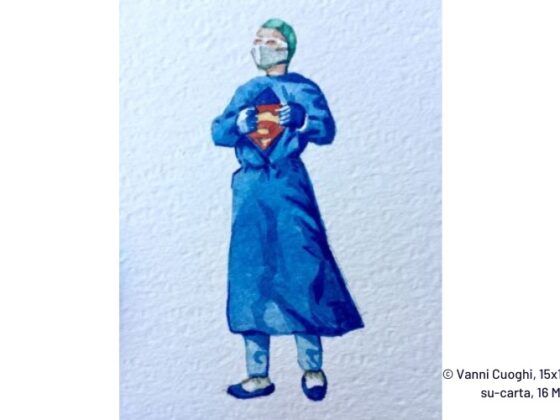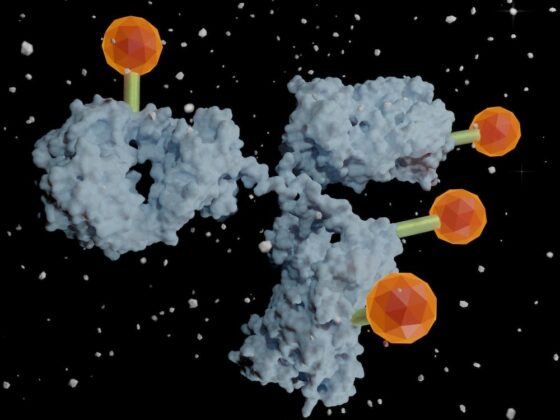Breast cancer cells impair the function of pancreatic islets to make them produce less insulin than required, resulting in higher blood glucose levels in breast cancer patients compared to women without cancer. The study, published in Nature Cell Biology (30th May, 2022), identified the culprit responsible for reprogramming the glucose metabolism of breast cancer patients as microRNA-122 (miR-122) contained in extracellular vesicles shed from breast cancer cells.
“For the first time we explored the pancreas as an organ that although seemingly unrelated to breast cancer, in that it isn’t a usual site of breast cancer metastasis, is influenced by factors secreted by breast cancer cells,” explained lead author Shizhen Emily Wang, a cancer biologist from University of California San Diego School of Medicine. “Cancer cells have a sweet tooth. They use more glucose than healthy cells to stimulate tumour growth and this has been the basis for PET scans in detecting cancer. By raising blood glucose that can be easily used by cancer cells, breast tumours make their own favourite foods while depriving normal cells of this essential nutrient.”
While at first glance breast cancer and diabetes would appear to be distinct entities, past research has uncovered associations between the two diseases. For example, meta-analyses have shown women with diabetes have a 20 to 27% increased risk of developing breast cancer. Furthermore, population studies show diabetes risk begins to increase two years after a breast cancer diagnosis, and by 10 years post-diagnosis is ~20% higher in breast cancer survivors than age-matched controls without diabetes. Additionally, hyperglycaemia has been associated with elevated mortality in patients with breast cancer, both with and without diabetes.
Wang and colleagues hypothesised that breast cancer cells may negatively affect glycaemic control through secretion of extracellular vesicles (EVs). EVs are lipi-bound hollow spheres that mediate crosstalk between cancer and normal cells through local and long-range transfer of functional cargos (including RNA, DNA, proteins and lipids). The team decided to focus efforts on miR-122 after their 2012 study, published in the Journal of Translational Medicine, showed that in 42 patients with stage II-III breast cancer miR-122 levels correlated with clinical outcomes including neoadjuvant chemotherapy response and metastatic disease relapse.
In the current study, the team started with an immune deficient female mouse model with human breast cancer cells injected into the mammary fat pad. In comparison to control mice (without tumours) those with tumours had lower insulin production and higher glucose levels (effects significant at P value of 0.05).
Next, in the mice with tumours they used CRISPR gene editing to ‘knock-out’ the miR-122 gene so that the tumours could not produce miR-122. In these mice they showed that although tumours remained in situ there was no dysregulation of insulin and glucose and that tumour growth was slowed. “This confirmed that miR-122 was mediating the effects,” says Wang.
In mice with tumours but no CRISPR editing they went on to explore normalising blood sugar levels by adding insulin-releasing pellets under the skin and SGLT2 inhibitors to lower blood sugar levels. Here they showed that mice receiving the interventions had slower tumour growth than comparable mice not receiving them.
Finally, they confirmed the link in 26 patients with breast cancer, who had never been diagnosed with diabetes, showing a statistical correlation between blood levels of microRNA-122 on the one hand and lower insulin and higher glucose levels on the other. Furthermore, levels of miR-122 in total circulating EVs were higher in women with breast cancer compared to controls without breast cancer.
“These findings support a greater need for diabetes screening and prevention among breast cancer patients and survivors,” says Wang. It is important to identify EV-mediated impairment of whole-body glycaemic control in breast cancer patients, she adds, since the process can contribute to both tumour progression and the development of type 2 diabetes.
Women with both diabetes and breast cancer should be cautioned not to stop their medication to control blood glucose levels. “Even those without diabetes should also be screened for high blood glucose levels to ensure that they are tightly controlled to prevent hyperglycaemia which could promote metastasis,” she says.
For breast cancer patients, future therapeutic approaches might combine conventional cancer therapy with agents protecting the pancreas against EVs. “Such agents could take one of two approaches. They could either block secretion of vesicles or cellular entry of the vesicles into the pancreas and other organs,” suggests Wang.
Already, an inhibitor of miR-122 has been developed by Regulus Therapeutics Inc., San Diego, that has been used in clinical trials as a potential treatment for chronic hepatitis C, which might be repurposed for breast cancer.
Wang believes that blocking miR-122 might deliver a number of benefits in breast cancer patients. A study she published in Nature Cell Biology, April 25 2022, demonstrated that miR-122 also causes protein degradation in skeletal muscles. “From our work we believe that miR-122 contributes to cachexia in cancer patients. This makes it an attractive therapeutic target that could serve the purpose of preventing glucose dysregulation, metastasis and cachexia,” she says.











